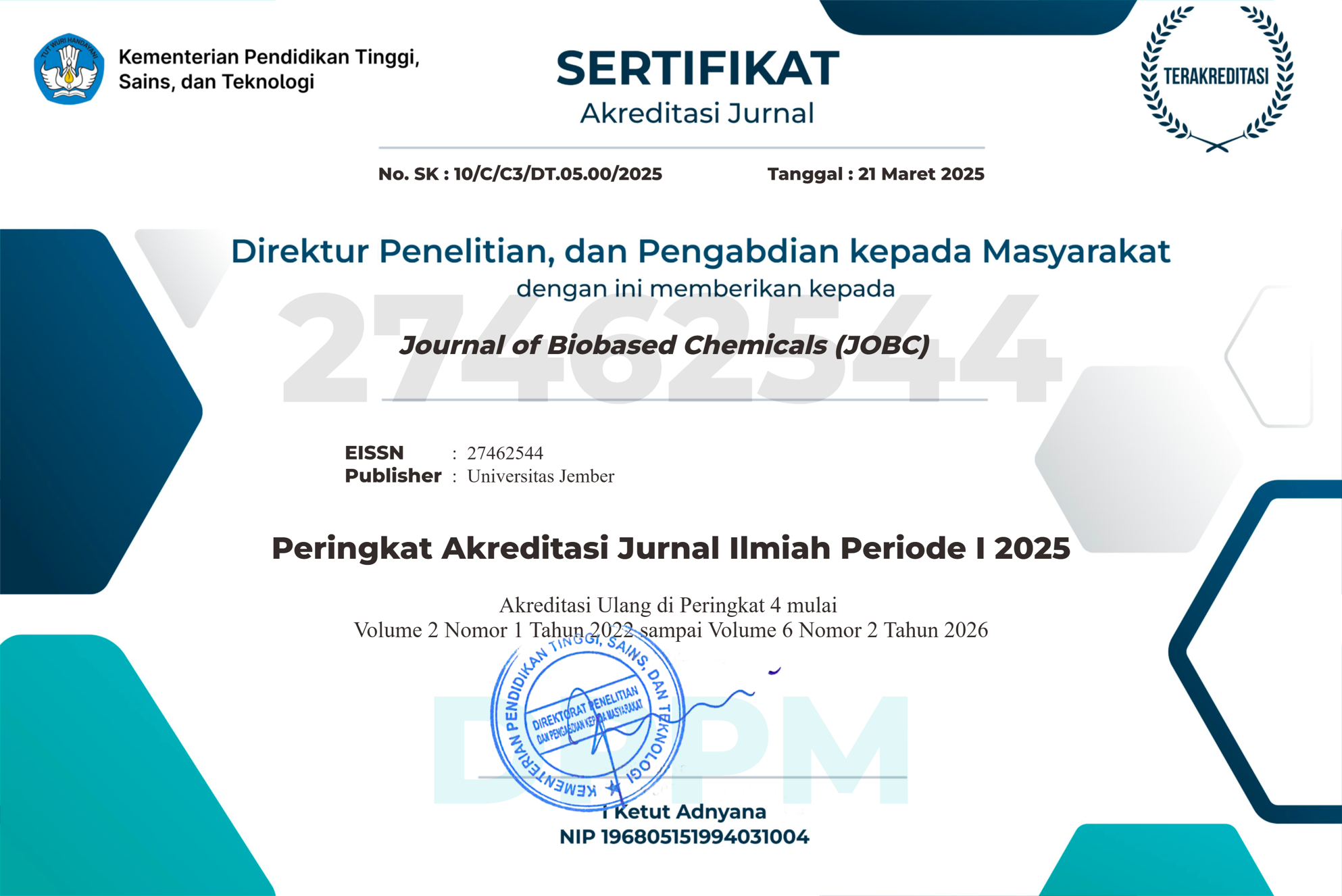Evaluation of the Effect of Microalgae Chlorella vulgaris on the Performance of Membrane Bioreactor for Industrial Wastewater Treatment
DOI:
https://doi.org/10.19184/jobc.v3i2.428Keywords:
Industrial Waste, MBBR, Microalgae, Dissolved Oxygen, Rising SludgeAbstract
Water pollution, especially from industry, is a problem that continues to emerge and even get worse. Rising sludge events often occur in industrial wastewater treatment processes. Process engineering with the addition of microalgae is proposed in this study to overcome the occurrence of rising sludge and improve wastewater quality based on dissolved oxygen levels. The control variables used were MLSS 1000 mg/L, microalgae Chlorella vulgaris 106 L, and urea and TSP 1,75 kg each. The dependent variable is rising sludge and DO levels while the independent variable is time. This research went through several stages, namely seeding microalgae, seeding microalgae into activated sludge in MBBR, experimenting with combining microalgae and activated sludge in MBBR, and installing ultrafiltration membranes with a WWTP capacity of 150 m3/day. The addition of microalgae in the MBBR process has a positive impact in improving the quality of industrial wastewater, which is characterized by the absence of rising sludge and DO levels exceeding the minimum threshold.








